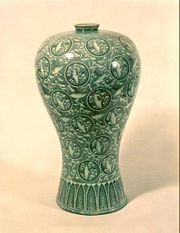History
Three Kingdom
Unified Silla
Goryeo Dynasty
Joseon Dynasty
Culture
Food
Tourism
Merchandises
|
History
The history of the early man in Korea appears to have started about half a million years ago that was from the Lower Paleolithic till now. The very first kingdom,was named as Go-Joseon or known as the Old Joseon, was founded in 2333 B.C and it expanding from the penisular to most of the Manchuria. |
In the early of first century B.C., Korea's three ancient Kingdoms of Goguryeo, Baekje and Silla ruled the whole Korean Peninsula and much of Manchuria and were by far the most powerful and eminent kingdoms in the area. The period of their rule, 57 B.C. - 668 A.D., is known as the Three Kingdoms Period. |
The Korean kingdoms competed with each other both economically and militarily. While Goguryeo and Baekje were more powerful for much of the era, defeating Chinese invasions several times, Silla's power gradually extended across Korea and it eventually established the first unified state to cover most of Korean peninsula by 676. |
In 668 A.D Goguryeo and Baekje were ultimately vanquished by Silla. After that incident,in 676 A.D., Shilla unified the peninsula for the first time. The Unified Silla Period, 676-935 A.D., was a golden age for Korean culture. The advancements in the area of Buddhist art are especially noteworthy. |
Soon after the fall of Goguryeo however,the former Goguryeo general Dae Joyeong led a group of Koreans to eastern Manchuria and founded Balhae (698 AD - 926 AD) as the successor to Goguryeo. After Balhae was defeated in 926, much of its people led by the Crown Prince was absorbed into Goryeo. |
Unified Silla itself fell apart in the late 9th century, giving way to the tumultuous Later Three Kingdoms period (892-936), which ended with the establishment of the Goryeo Dynasty. During the Goryeo period, laws were codified, a civil service system was introduced, and Buddhism flourished. In 1238, the Mongolian Empire invaded and after nearly thirty years of war, the two sides signed a peace treaty. In the succeeding Goryeo Dynasty, 918-1392 A.D., an aristocratic government was instituted. Buddhism was established as the state religion and came to have great influence in the political and administrative spheres. |
 Cheongja unhak sanggam mun maebyeong, the 68th national treasure of Korea |
The name "Korea" is actually a derivative of "Goryeo." |
The Joseon Dynasty, 1392-1910 A.D. was the peninsula's final dynasty. During this period, a number of political and economic reforms were enacted. The most prominent of these was the adoption of Confucianism as the state ideology. The surge of creative literary endeavors and the invention of Han-gul, the Korean alphabet, in 1443, impart this period with special cultural significance. Hanyang, now known as Seoul, was established as the dynasty's capital city in 1394. Palaces and gates were constructed during this period can still be seen in the city today. |
The Japanese invasion of the peninsula in 1910 ended the Joseon Dynasty. Korea remained under Japanese colonial rule for 35 years until the end of World War II. On August 15, 1945, Japan surrendered to the Allies and withdrew from the Korean Peninsula. Since then, it has been divided into two:-
- Democratic South Korea
- Communist North Korea
|
The Republic of Korea in the south established an independent government three years later. The Korean War began on June 25, 1950, when North Korea invaded South Korea. An armistice agreement was signed 3 years later, in 1953. |
|
|
|

